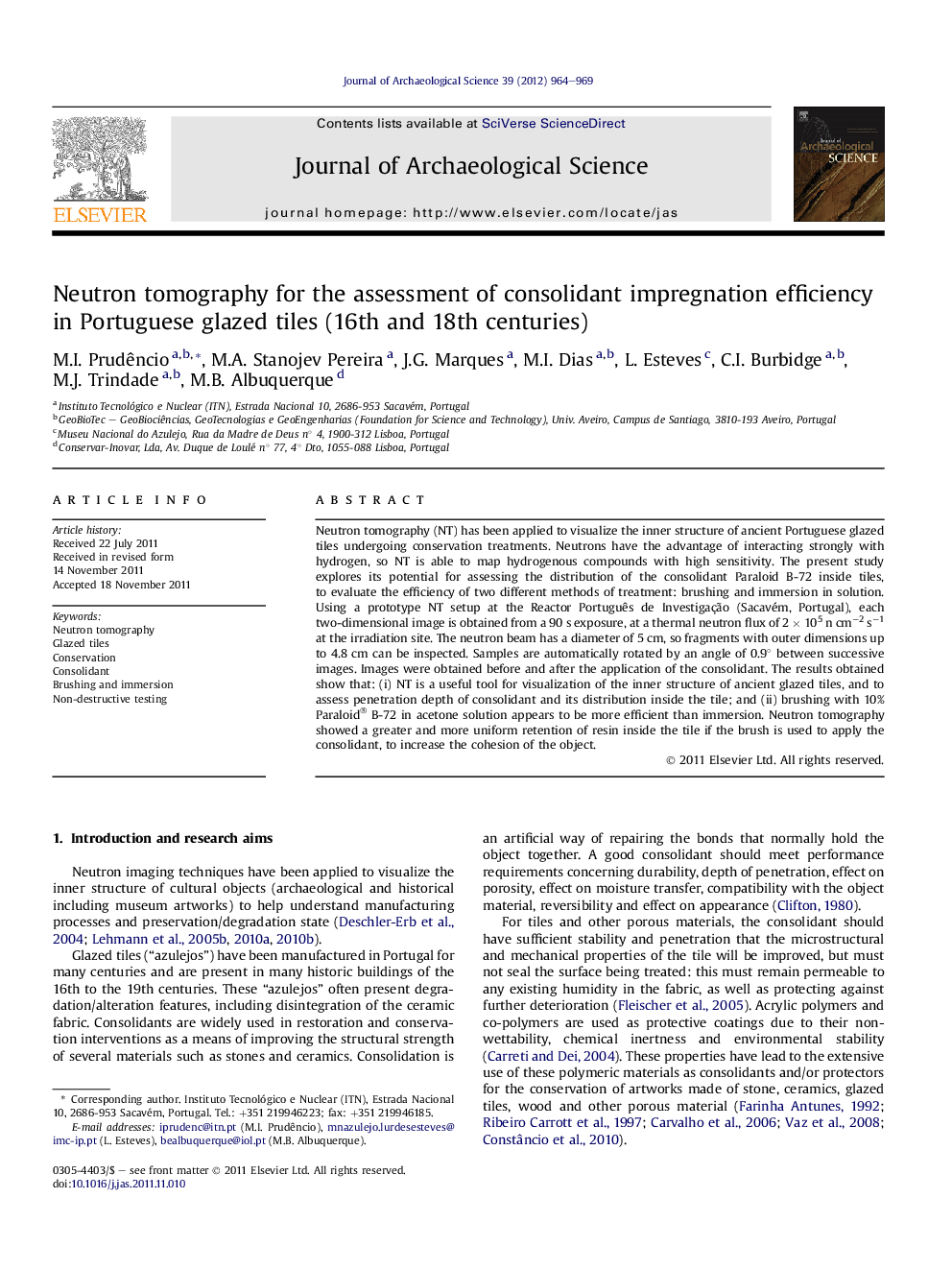| Article ID | Journal | Published Year | Pages | File Type |
|---|---|---|---|---|
| 1035588 | Journal of Archaeological Science | 2012 | 6 Pages |
Neutron tomography (NT) has been applied to visualize the inner structure of ancient Portuguese glazed tiles undergoing conservation treatments. Neutrons have the advantage of interacting strongly with hydrogen, so NT is able to map hydrogenous compounds with high sensitivity. The present study explores its potential for assessing the distribution of the consolidant Paraloid B-72 inside tiles, to evaluate the efficiency of two different methods of treatment: brushing and immersion in solution. Using a prototype NT setup at the Reactor Português de Investigação (Sacavém, Portugal), each two-dimensional image is obtained from a 90 s exposure, at a thermal neutron flux of 2 × 105 n cm−2 s−1 at the irradiation site. The neutron beam has a diameter of 5 cm, so fragments with outer dimensions up to 4.8 cm can be inspected. Samples are automatically rotated by an angle of 0.9° between successive images. Images were obtained before and after the application of the consolidant. The results obtained show that: (i) NT is a useful tool for visualization of the inner structure of ancient glazed tiles, and to assess penetration depth of consolidant and its distribution inside the tile; and (ii) brushing with 10% Paraloid® B-72 in acetone solution appears to be more efficient than immersion. Neutron tomography showed a greater and more uniform retention of resin inside the tile if the brush is used to apply the consolidant, to increase the cohesion of the object.
► Neutron tomography (NT) was used to visualize the interior of ancient glazed tiles. ► NT was used to optimize conservation techniques (consolidant application). ► Strong interaction of neutrons with hydrogen is used to detect acrylic polymers. ► Greater and more uniform retention of resin inside the tile if the brush is used. ► Brushing is better than immersion to increase the cohesion of the cultural object.
